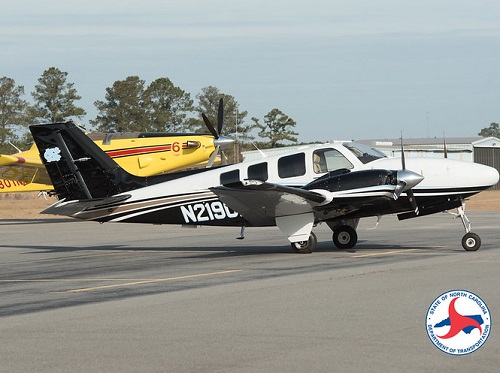The U.S. Department of Transportation recently awarded nearly $12 million in Small Community Air Service Development Program grants to support local air service projects.
[Above photo by the USDOT]
The agency said in a statement that those grants help provide financial incentives to air carriers, conduct studies on the possibilities of expanded service, and carry out marketing programs to promote existing local service, as well as address other challenges experienced by small communities.

That financial assistance also helps communities establish air services as well, USDOT said, along with restoring lost service, and provides support to establish new routes to improve connectivity and allow people in the community to fly more easily and affordably.
State departments of transportation are also engaged in a variety of efforts to improve air service in their respective parts of the country.
For example, state DOTs in Kentucky, Ohio, and North Carolina are participating in a year-long study on how to re-equip general aviation airports in Appalachia to accommodate electric aircraft.
Ohio University and North Carolina State University are spearheading the $500,000 study; supported by the government-funded Appalachian Regional Commission, an economic development entity serving a 13-state rural region from north Mississippi to the southern tier of New York State.
The study will include 18 Kentucky airports, 14 in Ohio, and four in North Carolina; focusing on what utilities and charging infrastructure will be needed to serve a new generation of electric aircraft.
Separately, the North Carolina Department of Transportation’s Division of Aviation recently launched an Advanced Air Mobility Planning Grant Program to empower communities to enhance their airports and attract new businesses.

That program offers local municipalities and regional planning organizations the opportunity to develop or enhance existing comprehensive plans that leverage AAM to improve transportation options, fuel economic growth, and elevate the quality of life for residents.
Meanwhile, on the heels of a recent state investment in 10 state airports, the Pennsylvania Department of Transportation – with the help of the Federal Aviation Administration – unveiled a new “Aviation Economic Impact Calculator” that will allow airports to view the economic impact of potential facility updates and activities.
PennDOT created the new tool to allow Pennsylvania’s 120 public-use airports to calculate updated impacts for their facility based on changes in airport activity, business tenants, and visitor spending. The calculator produces estimates of economic impact, including employment, payroll, and output, the agency said.
 Nation
Nation
Registration Open for AASHTO’s Winter Rail Meeting
December 19, 2025 Nation
Nation

